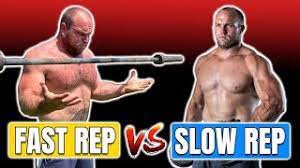
Tempo or Rep Speed
- Kent Nestler

- Jul 4, 2022
- 4 min read
Tempo or Rep Speed
This is the speed of your reps and it is broken down into 4 parts.
Negative phase or lowering -
The negative phase is the time taken in lowering the weight with gravity or stretching the working muscle.
In a Bench Press this would be lowering the weight to the chest.
In a Bent Over Row this would be lowering the weight to the point that the lats are stretched and the arms are ‘almost straight’
For a pulling movement the elbow or knee extends. The shoulders and hips extend.
For a pushing movement the elbow or knee flexes. The shoulders and hips flex.
Bottom phase or stretch position-
This is the time taken in the bottom or stretch position of the movement.
Normally on Bench Press there is a momentary touch or pause on the chest and then the bar is pressed to the top by extending the elbows and flexing the chest.
On a row the bottom position should feel like a stretch through the lats and between the shoulder blades.
Positive phase or raising/lifting -
This is the time taken to reach for the full contraction of the muscle back to the fully contracted or top position.
For a Bench press this would be the top almost fully extended elbow position.
For the row this would be the fully contracted position where the lats and scapula muscles are fully squeezed.
Top phase or full contraction -
At the top of the movement this would be the time the contraction is held at the top position.
Tempo
The tempo or rep speed is give as 4 numbers as time in seconds.
Controlled Reps for strength
3020 is 3second negative/0 second stretch/2 second contraction phase and 0 seconds at the full contraction.
This speed of format is a pretty standard rep speed on heavier weights. The rep speeds may slow down at the end of a set but for the most part the rep speed can be controlled.
This type of rep speeds suits weights in 4 to 12 reps per set format.
With weights of 70 to 85% of your 1 rep maximum weight or the maximum that you can lift.
The speed of the positive is still as fast as the reps will move but the weight will move slower as amount of weight approaches your 1 rep maximum.
Explosive/ballistic reps
A 2010 tempo are more explosive speed reps with 1010 being ballistic reps.
To be able to lift with this rep speed the weights will need to be more like 30% to 60% of your 1 rep maximum weight.
The less the weight the faster the potential speed.
The faster the speed the less the control and the more chance of injury. But the greater the recruitment of fast twitch fibres.
These reps help athletes that require explosiveness and speed.
They can still benefit bodybuilders for building muscle and recruiting fast twitch fibres.
Slow reps with pauses and full contraction holds
Tempo formats of 5152 or pauses in the stretch and contraction and slowing down of the negative increase the time under tension and the length of the set.
The weight you use on these sets would be around 50 to 70% depending on reps and the level of fatigue in the muscle.
These reps suit those that find it difficult to feel the muscles they are working. The bottom phase stretch and the peak contraction create a great deal of fatigue in the muscle.
The recruitment of fast twitch fibres becomes more apparent at the end of the set and fatigue sets in quick because each rep is 12 or more seconds versus explosive reps that are a quarter of the time.
Using slow reps also benefits creating more control in the bottom of the rep where most people feel a sense of urgency to speed up the rep because the weight may feel overwhelming.
It makes the bottom of the phase feel more controlled.
How to use these tempos can depend on the sporting application.
Speed/explosive sports
A strength/speed athlete may perform sessions of strength with 3020 Mixed with speed sessions of 2010 or 1010. They may also add jumps and throws on the end of the movement depending on the sport.
Some sports may also use slow reps to ad control to their techniques and use holds to slow down the movement and the to feel muscles that need to contract in the load position.
Bodybuilding
Bodybuilders tend to use all three in the same workout.
They will use controlled reps maintaining time under tension for the majority of Sets.
Then they decrease the weight and perform slow reps to focus on the muscle they are working.
Then they may finish off the muscle fibres with fast burn reps to maximise fatigue.
Bodybuilders don’t use jumping reps as they generally weigh a lot more than most and the joint stress is much greater.
Speed reps with jumps should also be avoided for people who are overweight or obese due to injury.
Conclusion
The tempo has 4 numbers down/bottom/up/top
The speed depends on the goal and the weight depends on the speed.
Controlled reps use 70 to 85% of 1RM.
Using 85% to 100% has powerlifting applications and the speed of Reps will slow drastically as the weight reaches 100%.
For Slow reps use 50 to 70% of 1RM in order to get more time under tension. The reps are purposely done slower.
For speed reps use weights of 30 to 60%. The more speed required the lighter the weight.
For added effect on speed reps the reps can be turned into jumps and throws for sporting applications.
Use combinations for different effects.








Comments